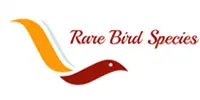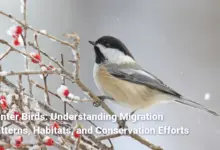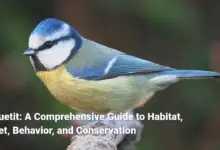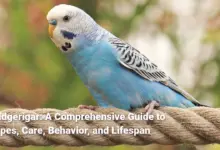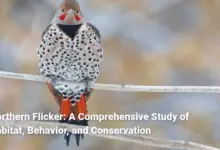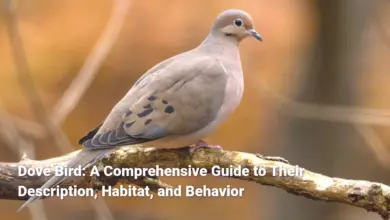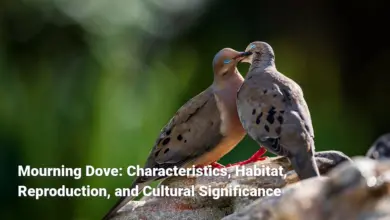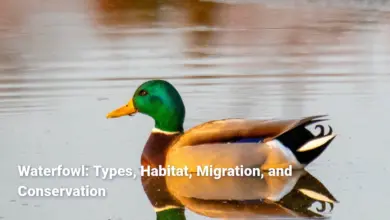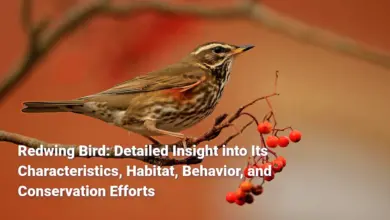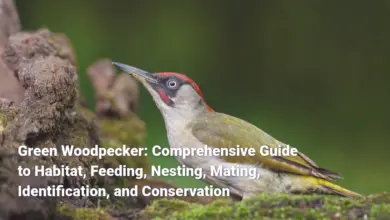Baltimore Oriole Bird: Comprehensive Guide to Identification, Habitat, Behavior, Diet, and Conservation
A Complete Guide to the Baltimore Oriole Bird: From Identification and Habitat to Behavior, Diet, Conservation, and Cultural Impact
The Baltimore Oriole Bird (Icterus galbula), a strikingly colorful songbird of North America, tantalizes bird watchers and nature enthusiasts alike with its vivid plumage and melodious songs. Honored as the state bird of Maryland, this oriole is much more than a mere symbol; it reflects the rich biodiversity and ecological significance of its habitats. These migratory birds paint the spring and summer landscapes with their vibrant orange and black colors, evoking an emotional response akin to that of witnessing a breathtaking sunrise. Often seen hanging upside down to forage for insects or nectar among the leaves, Baltimore Orioles encapsulate the serenity and vitality of suburban gardens, parks, and open woodlands.
Despite their common presence in areas of North America, the Baltimore Oriole’s population faces various threats that could jeopardize their future. These delightful birds not only enrich the environments they inhabit but also play essential roles in pollination and controlling insect populations. Understanding the Baltimore Oriole’s characteristics, behavior, habitat, and cultural significance helps foster a deeper appreciation for their role in ecosystems and encourages conservation efforts necessary to safeguard their existence. In the following sections, let’s delve into the captivating world of the Baltimore Oriole, exploring its identification, feeding habits, migration patterns, and much more.
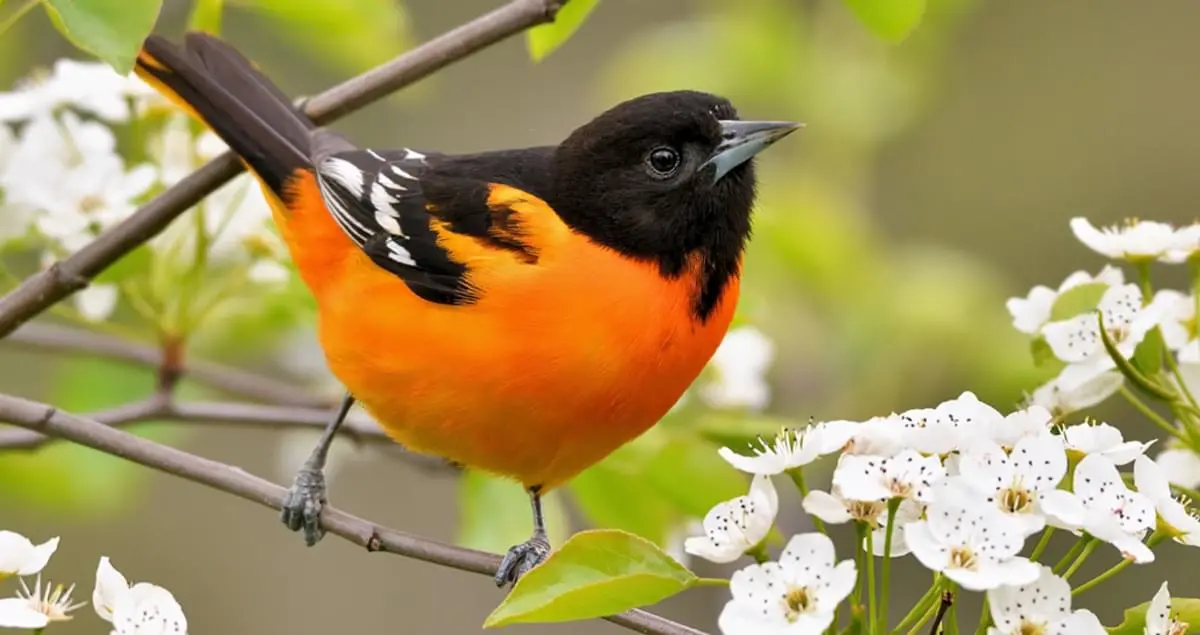
Identification and Characteristics of Baltimore Oriole Bird
The Baltimore Oriole Bird is easily recognized by its beautiful colors and distinct features. When encountered in the wild, one cannot help but compare its vibrant sight to that of a painted canvas an explosion of color adorning the tree branches. The males, adorned in a dazzling mix of flame-orange and jet black, draw the eye and invite admiration, while the female’s more muted tones evoke a sense of elegance and grace amidst their surroundings.
Key Identifying Characteristics:
- Adult Male: Flame-orange underparts contrasted with a solid black head, wings, and back, featuring a notable white wing bar.
- Adult Female: A subtler palette of grayish-brown with warm yellow-orange underparts, blended with two white wing bars that mirror their male counterparts.
- Juveniles: Resemble females but are even duller in color, marked by grayish backs and pale yellow washes.
These characteristics allow both novice and expert birdwatchers to distinguish the Baltimore Oriole in their natural habitat. Their long, pointed bills are adapted for a varied diet, enabling them to extract nectar from flowers while catching insects mid-flight or foraging on the ground. In observing these vibrant birds, one cannot help but reflect on nature’s artistry and the complexities of avian life.
Size and Measurements
The Baltimore Baltimore Oriole Bird is a medium-sized songbird, renowned for its agile flight and energetic presence in trees. The measurements of the bird add to its appeal known for being relatively compact yet lively, much like a sports car zooming through winding forest roads. Let’s delve into the specific size characteristics of this charming bird:
| Characteristic | Measurement |
|---|---|
| Length | 6.7 to 8.3 inches (17 to 21 cm) |
| Wingspan | 9.1 to 12.6 inches (23 to 30 cm) |
| Weight | 1.1 to 1.4 ounces (30 to 40 grams) |
Detailed Breakdown of Size:
- Baltimore Orioles boast a length ranging from approximately 6.7 to 8.3 inches, indicative of a bird that is both compact and agile.
- Their wingspan can reach up to 12.6 inches, allowing them to navigate through various environments with grace and ease.
- Weighing between 1.1 to 1.4 ounces, they fall into the lightweight category, enabling them to carry their vibrant plumage without hindrance.
These measurements not only depict the physical dimensions of the Baltimore Oriole but also illustrate its remarkable adaptability across different habitats in North America. By understanding their size and structure, birdwatchers can better appreciate the vibrant presence of Orioles and enhance their observing experience in the wild.
Coloration and Plumage
When it comes to plumage, the Baltimore Oriole Bird is a marvel of nature, evoking admiration akin to a tapestry woven in vibrant orange and deep black. This color combination serves both aesthetic and practical purposes, playing a crucial role in mating displays, camouflage, and communication.
Male Baltimore Oriole:
- Coloration: A blaze of flame-orange on its breast and belly, juxtaposed with a sleek black head and upper body. The white wing bar enhances contrast, making it even more conspicuous when it flutters through the treetops.
- Breeding Plumage: During the breeding season, the male’s bright feathers attract females and signal fitness to competitors, akin to a show-stopping performer dazzling on stage.
Female Baltimore Oriole:
- Coloration: A more subdued golden-yellow to brownish-orange that allows for camouflage in their lush surroundings. This muted palette protects them during nesting, mirroring the foliage that envelops them.
- Subtle Differences: Though less vibrant, their striking appearance is no less important; it serves as an evolutionary strategy, enabling them to blend in while maintaining an essential role in nurturing their young.
Juveniles:
These birds tend to showcase duller plumage, providing additional camouflage as they learn to navigate their environment. Their color variations highlight the adaptability and resilience of the species. Distinct from adult males, the juveniles resemble the females in coloration, which ensures protection until they mature.
The striking coloration of the Baltimore Oriole not only makes it one of the most visually stunning birds in North America but symbolizes the intricate connections between appearance, survival, and mating in the natural world.
Distinguishing Features of Males and Females
The differences between male and female Baltimore Orioles are emblematic of sexual dimorphism in bird species, a concept that encapsulates the intricate balance of aesthetics and ecology. The males are adorned with the resplendent colors designed to draw attention and impress, much like a master painter selecting hues for a vibrant masterpiece. Females, on the other hand, with their more subdued palette, embody a quiet elegance, reflecting a strategy of survival through camouflage.
Notable Differences:
- Vibrancy: Male Baltimore Orioles are characterized by their bright orange and deep black feathers, standing out vividly against dense foliage, while females exhibit olive-yellow to browns, blending flawlessly into their surroundings.
- Size and Shape: Males tend to be slightly larger and more robust, measuring an average of 1.1 to 1.4 ounces, compared to their female counterparts who are generally a bit lighter and less hefty. However, these distinctions can be subtle and occasionally deceiving in the field.
- Nesting Roles: Males engage in conspicuous displays that include singing and fluttering to attract mates; meanwhile, females are primarily responsible for nest building, weaving intricate hanging nests from grasses and fibers into slender branches.
These distinguishing features elucidate the interplay between beauty, functionality, and survival within the Baltimore Oriole species. An understanding of these differences enriches the birdwatching experience, allowing observers to appreciate the nuanced roles both genders play in their ecological narratives.
Habitat and Range of Baltimore Oriole Bird
The Baltimore Oriole is not just a bird; it’s a symbol of vibrant life thriving in the diverse environments of North America. They inhabit areas that reflect their need for food, nesting sites, and suitable breeding conditions, striking a delicate balance akin to a painter selecting the perfect canvas.
Key Habitat Features:
- Open Deciduous Forests: These areas provide essential tall trees for nesting and abundant food sources.
- Riparian Zones: Riverbanks and streams are vital for their foraging, enriching the ecology with insects and fruits.
- Orchards and Parks: Mixed-use environments, including local neighborhoods with mature trees, create sanctuaries for urban Baltimore Orioles.
Geographic Range:
Their breeding range spans the eastern and central regions of North America. However, during winter, they migrate southward to Central America, where warmer climates are essential for their survival. This dual existence showcases their adaptability and reliance on varied habitats throughout the year.
| Breeding Habitat | Wintering Grounds |
|---|---|
| Eastern and Central Canada | Central America |
| Eastern United States | Northern South America |
| Areas rich in mature trees | Caribbean Islands |
Understanding the habitat preferences and range of the Baltimore Oriole enriches the appreciation of its migrations and dependency on seasonal changes, emphasizing the bird’s connection to the ecosystems it inhabits.
Breeding Habitat Preferences
The Baltimore Oriole’s selection of breeding habitat is characterized by a need for safe nesting sites and ample food sources, reflecting a balance that underscores nature’s intricate designs. This choice resembles a chef selecting the finest ingredients to create a harmonious dish; the environment must provide everything necessary for successful breeding and nurturing.
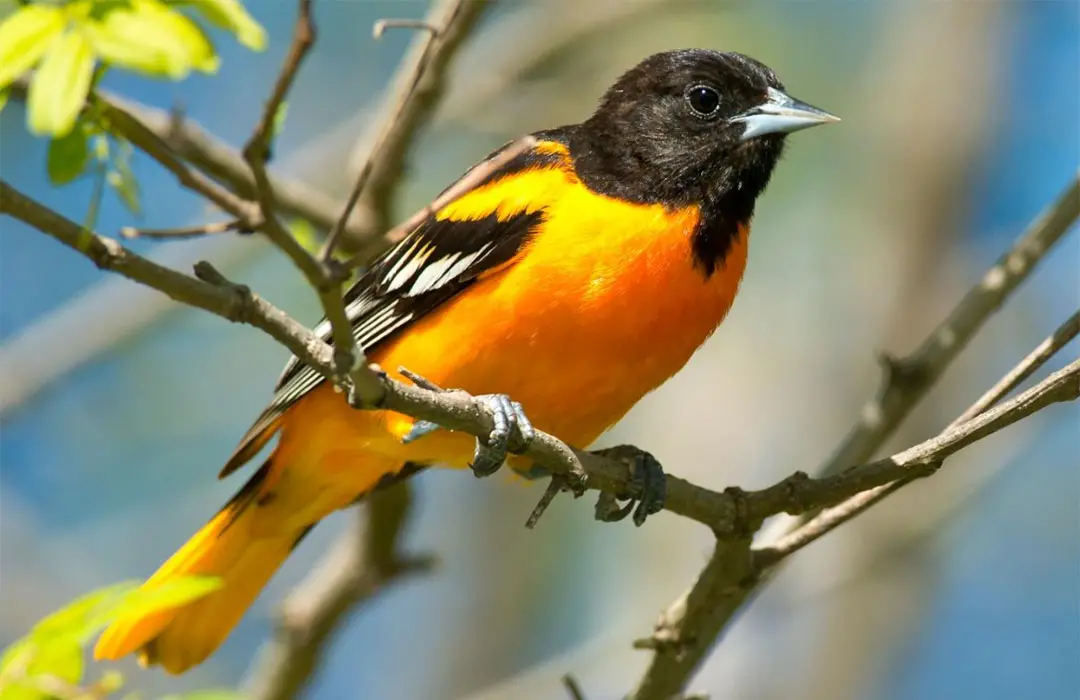
Preferred Breeding Sites:
- Nest Building: Female Baltimore Orioles excel in constructing intricate cup-shaped nests by weaving grasses, fibers, and sometimes synthetic materials like fishing lines. These nests are typically placed 20 to 30 feet above ground on slender branches of deciduous trees, offering protection from ground predators.
- Food Availability: During the breeding season, a diet rich in insects and fruits is critical. The abundance of these food sources ensures that both parents can provide adequate nourishment for the chicks, who require protein-rich diets for growth.
Habitat Characteristics:
- Location: Open woodlands and areas near water sources yield vital resources. These forests foster a productive foraging environment while enabling the species to maintain visibility and access to potential mates.
Overall, the breeding habitat preferences of the Baltimore Oriole Bird reflect its intricate relationship with its environment. The emphasis placed on suitable nesting sites and food availability emphasizes their dependency on healthy ecosystems an important reminder of why conservation efforts must focus on preserving these vital natural areas.
Wintering Grounds
Winter for the Baltimore Oriole Bird is not merely a season of dormancy but rather a period of strategic adaptation and survival. While many birds struggle to find food during the cold months, Baltimore Orioles prefer to migrate to warmer climates, reflecting their resilience and adaptability.
Preferred Winter Habitats:
During the winter months, Baltimore Orioles make their way to Central America, where the climate is favorable, and food sources are abundant. The specific characteristics of their wintering grounds include:
- Tropical and Subtropical Forests: These regions provide an array of fruits and nectar, essential macronutrients that sustain the birds throughout the colder months.
- Diverse Ecosystems: Their habitats often include open woodlands and shrubby areas near freshwater sources which yield a continuous supply of food.
Adaptation Strategies:
- Diet Composition: In winter, Baltimore Orioles primarily focus on fruits and nectar, supplementing their diet with insects as they become available. This seasonal shift mirrors the way humans adapt their culinary preferences to incorporate seasonal harvests.
- Social Behavior: During these months, Orioles may join mixed-species social flocks to enhance foraging efficiency and provide safety from potential predators a behavior resonating with the tenet of strength in numbers.
The Baltimore Oriole’s wintering grounds demonstrate its adaptive nature, emphasizing the interconnectedness of species and their environments. This adaptability is vital for their survival and exemplifies the importance of preserving the habitats essential to their life cycles.
Migration Patterns
Migration is a crucial aspect of the Baltimore Oriole’s life cycle, enabling it to navigate between breeding and wintering grounds. The migration patterns of these birds evoke a sense of wonder, resembling a carefully choreographed dance as they traverse vast distances across the continent.
Migration Timing:
- Spring Migration: Baltimore Orioles typically begin their migrations southward as early as mid-July, with males often arriving at breeding grounds around late April to early May. Their return marks the beginning of spring, reminiscent of the refreshing renewal that follows winter.
- Fall Migration: As the seasons transition and temperatures begin to drop in late August to September, the orioles begin moving southward again, heading toward Central America to escape the cold.
Migration Routes:
From their breeding territories in Canada and the northern United States, the Baltimore Orioles embark on extensive journeys rich with diverse habitats that provide sustenance. While they often follow established flyways, birdwatchers can notice their presence in various stopover locations, including parks and gardens that facilitate refueling during their journey.
| Migration Phase | Key Locations |
|---|---|
| Spring Migration | Eastern and Central USA |
| Breeding Areas | Southern Canada to Texas |
| Fall Migration | Central America |
These migration patterns highlight the Baltimore Oriole’s remarkable adaptability and reliance on different habitats throughout the year. Monitoring these movements not only enriches the understanding of their life cycle but also highlights the importance of protecting the various environments they depend on year-round.
Behavior and Social Structure of Baltimore Oriole Bird
The behavior and social structure of the Baltimore Oriole Bird illustrate the intricate balances of nature. These birds are not just colorful inhabitants of the woods and gardens; they play dynamic roles in maintaining their ecological niches throughout their lives.
Daily Activity:
- Diurnal Nature: Baltimore Orioles are primarily active during the day, engaging in foraging, singing, and social interactions. Their vibrant presence and melodious songs create a delightful ambiance in the environments they inhabit.
- Social Behavior: Outside the breeding season, Baltimore Orioles tend to be solitary or form loose flocks. However, they retain territorial behavior, particularly during breeding, when males defend their nesting territories against competitors.
Communication:
- Vocalizations: The songs of male Baltimore Orioles are fluid and melodious, critical in attracting mates and asserting dominance over their territories. Their calls are often likened to flute-like notes cascading through the trees, capturing the attention of both mates and rivals.
- Non-Song Calls: In addition to songs, Baltimore Orioles produce softer calls for communication among themselves, particularly in alerting to potential threats or coordinating movements within flocks.
The behavioral characteristics and social structures of Baltimore Orioles emphasize a complex relationship with their environment, showcasing their adaptability and responses to fluctuating ecological conditions throughout their life stages.
Vocalizations and Songs
Vocalizations serve as a vital form of communication for Baltimore Orioles, intertwining beauty and functionality. Their songs evoke joy and vibrancy, reminding observers of the richness and complexity of the natural world.
Songs of the Male Baltimore Oriole:
- The male Baltimore Oriole’s song is characterized by clear, flutelike notes that resonate throughout its territory, capturing the spring air with a symphony of sound.
- Often serving as a primary mode of attracting females and defending territories, their vocal prowess reflects both elegance and assertiveness, reminiscent of the dazzling spectacle at a concert.
Soft Calls and Other Communication:
- Beyond their captivating songs, Baltimore Orioles communicate using a range of softer chirps and calls. These sounds can reflect various social interactions, such as signaling alarm to fellow orioles or coordinating within family groups.
- Nestlings also exhibit vocalizations, producing loud chirps to alert their parents, a reminder of the continuum between nurturing and survival in avian species.
Understanding the vocalizations of the Baltimore Oriole highlights how these birds utilize sound as a means of expression, fostering connections within their species while enhancing the sensory experiences of those fortunate enough to encounter them.
Nesting Habits
Nesting is a critical aspect of the Baltimore Oriole’s life cycle, reflecting not only their skill at construction but also their adaptability and resourcefulness. Their nesting habits represent the culmination of instinct and learned behavior a testimony to the bird’s link to the ecosystem.
Nest Construction:
- Female Baltimore Orioles are renowned for their remarkable weaving techniques, using grasses, plant fibers, and other available materials to create unique cup-shaped nests that hang from flexibility in the branches of trees. This technique resembles an artist meticulously crafting a delicate sculpture, ensuring both beauty and functionality.
- The nests are typically built 20 to 30 feet above the ground, utilizing the high vantage point to provide protection from ground predators while remaining accessible to adult birds for feeding their young.
Nesting Cycle:
- The female Baltimore Oriole typically lays a clutch of three to six pale blue eggs, which she incubates for about 12 to 14 days. After hatching, the young remain in the nest for an additional two weeks, during which they are fed a diet rich in insects and fruits.
- Notably, Baltimore Orioles typically raise only one brood per season and do not reuse old nests, indicating a commitment to quality over quantity in their reproductive strategies.
These nesting habits reflect a blend of avian instinct and environmental adaptation, emphasizing the intricate relationships Baltimore Orioles maintain with their surroundings while ensuring the survival of their young.
Territorial Behavior
Territoriality is a defining characteristic of the Baltimore Oriole’s life, particularly during the breeding season. The correlation between territory claim and reproductive success has created a competitive landscape that mirrors the dynamics of life in bustling communities.
Territorial Claims:
- Males arrive on breeding grounds before females, establishing territories through singing and displays. Their songs resonate throughout their claimed areas, signaling to potential mates and rival males alike.
- They defend their nesting territories aggressively, often engaging in physical confrontations with intruders to maintain access to vital food resources and nesting sites.
Behavior During Breeding Season:
- Males employ elaborate courtship displays, which include singing from prominent perches and fluttering to demonstrate their fitness and attract females.
- While Baltimore Orioles are generally considered seasonally monogamous, extra-pair copulations are common, maximizing genetic diversity and ensuring reproductive success.
The territorial behaviors of Baltimore Orioles showcase the intersection of instinct, competition, and reproductive strategies. Observing these dynamics in nature enhances the appreciation of their ecological roles and the delicate balances inherent in wild ecosystems.
Diet and Feeding of Baltimore Oriole Bird
Understanding the diet of the Baltimore Oriole is fundamental to appreciating its role within its ecosystem. Their diets exhibit adaptability, reflecting shifts between seasons, available resources, and breeding needs themes encapsulated beautifully in the art of birdwatching.
Typical Diet Composition:
Baltimore Orioles have a varied diet that consists of fruits, insects, and nectar. The composition can shift based on seasonal availability:
- Fruits:
- A favorite among Baltimore Orioles is sweet fruits such as oranges, grapes, raspberries, and blackberries.
- They are particularly apt to visit backyard feeders set with orange halves or jelly, showcasing a preference for high-sugar foods.
- Insects:
- During the breeding season, their diet leans heavily on insects caterpillars and spiders are prime sources of protein essential for raising nestlings.
- Common prey includes grasshoppers, crickets, and beetles providing the nutrition needed during crucial developmental periods.
- Nectar:
- With their long, pointed bills, Baltimore Orioles skillfully extract nectar from flowers and are known to visiting hummingbird feeders, indicating their adaptability in seeking food sources.
- Sugar Water:
- Birdwatchers often attract orioles using homemade sugar-water mixtures, helping to draw these vibrant birds into residential spaces.
Seasonal Variations:
| Season | Typical Diet Composition |
|---|---|
| Spring and Fall | High-sugar fruits and nectar for energy |
| Summer | Emphasis on protein-rich insects during breeding |
| Winter | Fruits and nectar primarily, with occasional insects |
The diverse dietary habits highlight Baltimore Orioles’ ecological roles as both pollinators and insectivores, contributing to healthy ecosystems while nourishing families. Understanding their dietary needs can encourage humans to create environments that support their well-being.
Typical Diet Composition
The diet of the Baltimore Oriole showcases its adaptability and highlights its role within the ecosystems it inhabits. Like an artist mixing colors to create a masterpiece, these birds utilize a variety of food sources found in their environment.
Key Dietary Components:
- Fruits:
- Baltimore Orioles are primarily frugivorous, favoring an array of sweet fruits. Some of their favorites include:
- Oranges: Often served in halves, they delight in pecking holes into the juicy flesh.
- Grapes: Dark-skinned varieties are particularly attractive.
- Berries: Including blackberries, raspberries, and mulberries.
- Baltimore Orioles are primarily frugivorous, favoring an array of sweet fruits. Some of their favorites include:
- Insects:
- As they breed, their protein intake increases through insect consumption:
- Caterpillars: Especially sought after for their nutrient density.
- Spiders and Beetles: Commonly found in their woodland habitats.
- Crickets and Grasshoppers: Varied in size, providing essential dietary diversity.
- As they breed, their protein intake increases through insect consumption:
- Nectar:
- Migratory periods and warmer months find Baltimore Orioles sipping nectar from flowers, leveraging their bills’ length for access.
- Sugar Water:
- Birdfeeders set with a sugar-water solution (1 part sugar to 4 parts water) can attract these vibrant birds to gardens, providing easy access to vital energy sources.
Feeding Preferences:
In addition to their natural foraging methods, Baltimore Orioles adapt their feeding strategies to include interactions with humans, often visiting backyard feeders and becoming a source of joy for many bird watchers.
The adaptation to diverse food sources enables Baltimore Orioles to thrive in various habitats, highlighting their ecological importance. Promoting an understanding of their diet contributes to enhanced practices for attracting and conserving these beautiful birds.
Feeding Strategies and Techniques
The Baltimore Oriole’s feeding strategies are as dynamic and engaging as the colorful patterns of its plumage. These techniques encompass a blend of foraging skills and resourcefulness, much like a gourmet chef determining the best approach to prepare each dish.
Primary Feeding Techniques:
- Insectivorous Feeding:
- Orioles adeptly glean insects from foliage, utilizing their sharp bills to snatch prey off leaves, enhancing their diet during the crucial breeding season.
- They utilize acrobatic skills to catch insects mid-air, showcasing agility while darting between branches.
- Eating Fruits:
- They deftly puncture fruits with their bills to access the juicy interiors. Hanging upside down from branches while feeding allows them to exploit harder-to-reach fruit.
- Orioles are known to feed on a variety of colors and sizes of fruits, indicating their discerning palates and preferences.
- Consuming Nectar:
- Not only adept eaters of fruits, Baltimore Orioles can extract nectar using long, specialized bills that function much like a straw. This makes them effective pollinators in various floral communities.
Ideal Conditions for Feeding:
To attract Baltimore Orioles, proper feeder placements and feeding techniques are essential:
- Location and Height: Placing feeders 4 to 5 feet above ground in sunny areas increases visibility and reduces predator risk.
- Pre-Season Setup: Establishing feeders in late March or early April ensures they are ready for the orioles as they return from migration.
- Variety of Foods: Providing a mix of fruits, jelly, nectar, and insects enhances the feeding experience, catering to their diverse preferences.
The adaptive feeding strategies of Baltimore Orioles showcase their resilience within ecosystems, highlighting their role as pollinators and contributors to plant diversity. Observing these birds’ feeding behaviors enhances the birdwatching experience while promoting conservation awareness among communities.
Sources of Food Attractions
To effectively attract Baltimore Orioles to backyards and gardens, understanding the birds’ food preferences and providing appropriate offerings is crucial. These dietary sources facilitate successful encounters and enhance the enjoyment of observing these vibrant songbirds.
Effective Food Offerings:
- Fruits:
- Oranges: Cut in halves or quarters, will tempt orioles due to sweetness.
- Grapes: Particularly beneficial when sliced to expose their juices.
- Berries: Blackberries, raspberries, and mulberries attract orioles naturally and can be provided in bushes or small trees.
- Special Treats:
- Grape Jelly: Providing small portions in shallow dishes is particularly successful, as orioles have a sweet tooth.
- Mealworms: Fresh or dried mealworms can attract adults, especially during the breeding season when they search for protein-rich foods for their young.
- Nectar:
- Homemade Sugar Water: A mixture of 1 part sugar to 4 parts water can mimic natural nectar sources, providing easy nourishment.
- Commercially Available Nectar: Available specifically for orioles and hummingbirds encourages visits.
Ideal Feeding Station Setup:
- Feeder Types: Utilizing specialized oriole feeders with larger ports caters to the size of their beaks for easy access.
- Placement: Feeder installations in sunny, open areas with close proximity to brushy or tree cover increases attraction and provides safety.
By recognizing and implementing these food sources and strategies, backyard enthusiasts can invite the delightful presence of Baltimore Orioles into their gardens. This not only enriches the living environment but also fosters a genuine appreciation for bird conservation.
Conservation and Population Trends of Baltimore Oriole Bird
The conservation status of the Baltimore Oriole Bird reflects a mixture of stability and concern, as various factors contribute to regional population trends. Despite being classified as a species of Least Concern, there are significant challenges that underpin the need for continuous conservation efforts.
Overview of Current Status:
Though the overall population of Baltimore Orioles appears stable, it is essential to understand the nuances of regional trends. Recent studies have revealed:
- Population Snapshots: A decline of about 44% has occurred across their range, highlighting critical ecological issues affecting these birds.
- Regional Variations: In contrast, increases have been noted in western regions of North America, compensating for losses incurred in the eastern territories, leading to a net population stability.
Conservation Initiatives:
Conservation efforts for the Baltimore Oriole primarily revolve around habitat preservation, restoration, and community education. These initiatives focus on:
- Habitat Protection: Securing and maintaining environments conducive to breeding and foraging is vital.
- Public Engagement: Programs that raise awareness about the species, its habitat needs, and threats can foster community involvement in conservation initiatives.
Importance of Maintaining Ecosystems:
- Protecting spaces where Baltimore Orioles thrive boosts biodiversity, contributes to ecosystem balance, and enhances resilience against climate change and habitat destruction.
- Concerted conservation efforts help safeguard this iconic species while preserving the ecological functions it fulfills within its habitats.
In summary, while the Baltimore Oriole Bird currently maintains a status of least concern, underlying population declines in certain areas underscore the ongoing need for targeted conservation actions to protect these vibrant songbirds for future generations.
Current Conservation Status
The conservation status of the Baltimore Oriole reveals a complicated balance of ecological challenges and stable populations across their range. Despite not being classified as endangered, ongoing monitoring and conservation efforts are crucial for their future.
Key Insights into Their Conservation Status:
- Stable Population: Overall, Baltimore Orioles appear stable, yet specific regional trends indicate fluctuations due to various environmental factors.
- Population Declines: Recent studies suggest a significant decline of approximately 44% in the Baltimore Oriole population, particularly in the eastern United States, emphasizing critical conservation needs.
Conservation Efforts:
Conservation activities focus on several fronts:
- Habitat Preservation: Protecting important breeding and foraging habitats is essential for maintaining Baltimore Oriole populations.
- Community Engagement: Raising awareness and involvement among local communities can foster better conservation practices.
Targeting Threats:
Ensuring that Baltimore Orioles can survive and thrive necessitates addressing direct threats such as habitat loss, pesticide use, and predation.
In conclusion, while the Baltimore Oriole Bird is currently safe from endangerment, it is paramount to continue conservation efforts that address existing challenges, ensuring these remarkable birds remain a vibrant part of North America’s avian landscape.
Threats to Baltimore Oriole Populations
Despite their vibrant presence and adaptability, Baltimore Oriole populations face substantial threats that challenge their survival. Understanding these threats is crucial for the continued conservation of these beloved birds.
Primary Threats:
- Habitat Loss: One of the most pressing issues, habitat loss due to deforestation and urbanization significantly affects the availability of nesting and foraging sites.
- Pesticide Use: The application of pesticides in agricultural practices reduces the availability of insect prey while also posing direct toxicity risks to the birds themselves.
- Climate Change: Altered temperature and weather patterns can disrupt migratory routes and food availability, leading to mismatches crucial for breeding success.
Other Contributing Factors:
- Predation: Increased predation levels from domestic pets and natural predators can lead to higher mortality rates for both adult birds and their young.
- Window Collisions: As birds migrate and travel through human-altered landscapes, collisions with glass structures contribute to avoidable fatalities.
Combined Effects:
The interaction of these factors culminates in cumulative pressures on already vulnerable populations, necessitating adaptive management practices and education to mitigate their impact.
Overall, by identifying and addressing these threats, conservationists can devise strategies that lead to a more resilient future for the Baltimore Oriole Bird and the ecosystems they inhabit.
Data on Population Changes
Recent studies examining the population dynamics of Baltimore Orioles reveal significant insights into their conservation status, highlighting the urgent need for focused action to address population declines. As vibrant as their plumage, the data illustrates both challenges and trends influencing their future.
Population Trends:
- Population Decline: Recent estimates indicate a staggering 44% decrease in Baltimore Oriole populations over the past few decades, equivalent to two out of every five birds disappearing.
- Regional Disparities: While eastern populations decline, numerous reports reflect an increase in the western segments of their range, indicating a nuanced regional balance that complicates the overall assessment of the species’ status.
Contributing Factors to Changes:
- Significant drivers of this decline encompass threats like habitat loss, climate change, and pesticide use, all of which undermine successful reproduction and environmental health.
- A push for robust conservation efforts focused on habitat protection and restoration is imperative to counteract these alarming trends.
Conservation Call to Action:
As data continues to pour in, the insights gleaned emphasize the importance of strategic conservation programs that address both habitat preservation and public awareness.
In summary, the population dynamics of the Baltimore Oriole paint a complex picture of challenges and progress. Understanding these changes informs conservation efforts essential for safeguarding these stunning birds in North America.
Cultural Significance of Baltimore Oriole Bird
The Baltimore Oriole Bird is not just a bird; it serves as a potent cultural symbol, particularly in Maryland, where it is the state bird. Its significance extends far beyond mere biology, intertwining with history, art, and local identity a tapestry woven in color and song.
Role as a State Bird:
- Cultural Identity: Officially designated as Maryland’s state bird in 1947, the Baltimore Oriole embodies state pride and serves as an emblem that reflects the colors of the Calvert family coat of arms black and gold.
- Local Folklore: The oriole’s striking appearance and melodic song foster community connection, as its presence invokes joy and symbolizes the beauty of nature encapsulated in local traditions.
Artistic Representations:
- Many local artists celebrate the Baltimore Oriole in various forms of artwork, using its bright plumage as inspiration for paintings, crafts, and community celebrations that emphasize nature and heritage.
- The oriole frequently features in literature as well, symbolizing themes of renewal, freedom, and joy, linking the bird to human emotions and experiences.
Impact on Local Ecology:
- The Baltimore Oriole plays a role in maintaining local ecosystems, feeding on fruits, nectar, and insects. Their presence enhances biodiversity and serves as a reminder of the interconnectedness of all life.
Thus, the Baltimore Oriole exemplifies a rich cultural legacy while also serving necessary ecological functions. This bird’s impact on identity, art, and community narratives reinforces the urgency of conservation efforts to protect not only the bird itself but the rich cultural heritage they represent.
Role as a State Bird
Designated as Maryland’s state bird in 1947, the Baltimore Oriole embodies cultural significance that resonates throughout the state’s history and identity. It’s a symbol of pride, beauty, and ecological vibrancy, all interwoven in the state’s narrative.
Symbolism and Identity:
- The oriole’s colors mirror the black and gold of the Calvert family coat of arms, linking it directly to Maryland’s historical heritage.
- Its melodious song and striking visual appeal invoke a sense of joy and pride among residents, often associated with springtime and the renewal of nature.
Engagement in Local Traditions:
- The Baltimore Oriole features prominently in local festivals and events, serving as a connecting thread in community gatherings that celebrate nature’s beauty.
- The engagement of residents with the state bird fosters a shared sense of stewardship, enhancing awareness of conservation efforts and the importance of preserving local wildlife.
Educational Importance:
- The oriole’s vibrant presence in parks and gardens provides educational opportunities, serving as a gateway for exploring ornithology and ecological principles among residents and visitors alike.
The Baltimore Oriole’s designation as the state bird goes beyond official recognition; it encapsulates a vibrant cultural and historical legacy, promoting conservation principles that celebrate Maryland’s rich natural heritage.
Cultural Representations in Art and Literature
The Baltimore Oriole serves as a powerful muse, inspiring various forms of artistic expression across North America. Its dazzling plumage and melodic song capture the imagination, making it a prominent figure in literature and artistic endeavors.
Artistic Significance:
- The vibrant colors of the Baltimore Oriole inspire visual artists, symbolizing joy, beauty, and the vitality of nature. Paintings and illustrations often showcase the bird in its natural habitat, merging art with environmental appreciation.
- The oriole’s striking appearance frequently finds itself depicted in crafts, sculptures, and community art projects, emphasizing cultural pride and local identity.
Literary Presence:
- In literature, the Baltimore Oriole Bird is commonly referenced as a metaphor for freedom and beauty, often evoking feelings of exuberance and reflection on the themes of nature and conservation.
- Poets and writers have drawn inspiration from the oriole’s song, incorporating its melodies into stories that celebrate the simple joys of life and the interconnectedness of all living beings.
Connective Symbolism:
- The bird embodies a larger narrative that highlights the significance of nature in human culture, representing the intertwining of avian life with human emotions and experiences.
- Its presence in both local lore and artistic representations reinforces a collective commitment to preserving the natural environment.
In summary, the cultural representations of the Baltimore Oriole vividly illustrate its significance in artistic and literary realms. By celebrating this bird’s beauty and connection to nature, individuals foster a deeper understanding of the importance of conservation and the enchanting narratives it inspires.
Impact on Local Ecosystems
The Baltimore Oriole plays a significant role in the local ecosystems, contributing not just as a beautiful bird, but as a vital player in maintaining environmental health and balance. Their presence creates a ripple effect, enhancing ecological interactions and promoting biodiversity.
Role as a Pollinator:
- Baltimore Orioles consume nectar and, in doing so, contribute to the pollination of various plants. This beneficial relationship enhances the reproduction of flowering species, necessary for maintaining healthy habitats.
Dietary Influence:
- By feeding on fruits and insects, Baltimore Orioles help regulate insect populations and participate in seed dispersal, acting as both preys and predators within their ecosystem.
- Their diets contribute to maintaining balanced food webs, underscoring their importance to ecological stability.
Indicator Species:
- The presence of Baltimore Orioles often reflects the health of their environments. Healthy oriole populations generally signal the maturity and richness of their habitats, highlighting connectivity within local ecosystems.
Biodiversity Enhancement:
- Each oriole contributes to the overall biodiversity of their habitats, encouraging the richness of species interactions and ensuring ecological resilience.
Through their multifaceted roles within local ecosystems, Baltimore Orioles illustrate the complex interdependencies that exist within nature. Their presence highlights the critical importance of habitat conservation and celebrates the beauty of avian life.
Additional Resources for Birdwatchers
For those looking to explore the world of birdwatching and specifically seek to observe the captivating Baltimore Oriole, a wealth of resources and information can enhance the experience.
Best Locations for Observation:
- Open Deciduous Woodlands: Parks and gardens featuring trees like American Elms and Maples serve as prime habitats for Baltimore Orioles, where their vibrant colors can be spotted flitting from branch to branch.
- Community Parks: Often, community parks provide ample forage, making them ideal spots to observe Orioles in action.
- Backyards with Feeders: Creating an inviting atmosphere with fruit-filled feeders can draw these colorful birds into residential areas, enhancing viewing opportunities.
Timing and Seasonal Considerations:
- Spring Migration: Begin searching for Baltimore Orioles around late April as they return to breeding grounds, making this an ideal time for observations of courtship and territorial singing.
- Nesting Season: From late April to early May, witness the nesting behaviors, courtship displays, and vibrant interactions that make the breeding season an enthralling time to observe these birds.
Tools for Birdwatching:
- Books and Guides: Comprehensive field guides detailing North American birds will equip enthusiasts with knowledge about Baltimore Oriole identification, behavior, and habitats.
- Tech Applications: Utilizing bird identification apps, like Merlin Bird ID, allows for on-the-go identification and information sharing within the birdwatching community.
Observation Tips:
- Use Binoculars: A high-quality set of binoculars can enhance the viewing experience, allowing for detailed observation high in the trees.
- Be Patient and Quiet: Orioles can be skittish, so remaining calm and quiet will increase your chances of successful observation.
By incorporating these resources and tips, birdwatchers can immerse themselves in the vibrant world of the Baltimore Oriole, enhancing their appreciation of nature while fostering efforts to support conservation initiatives.
Best Locations for Observation
To successfully observe the magnificent Baltimore Oriole, selecting the right locations is essential. Similar to finding hidden treasures within nature, knowing where to look can lead to rewarding experiences filled with vibrant colors and melodic songs.
Optimal Locations:
- Open Deciduous Woodlands: Parks and natural areas with a mixture of tall trees are prime spots for observing Baltimore Orioles in their natural habitats, as these areas provide ample feeding and nesting opportunities.
- Community Parks: Many community parks often feature mature trees and open spaces, ideal for spotting Orioles as they flit about in search of food.
- Residential Backyards: Creating backyard havens with fruit feeders or orange halves can entice Baltimore Orioles, especially during migration and nesting seasons.
Habitat Characteristics:
- Mature Trees: Baltimore Orioles prefer habitats with tall trees, such as American Elms and Maples, where they can build nests and find food.
- Proximity to Water Sources: Ornate water bodies often attract a variety of birds, including Baltimore Orioles, who rely on nearby resources in their foraging efforts.
Seasonal Timing:
- Spring Migration: April marks an ideal month to spot returning male Orioles as they establish territories and attract females, making the observation experience lively.
- Breeding Season: Late April to early June provides opportunities to witness nesting behaviors, as female Orioles gather materials for their unique hanging nests and males sing to court them.
By considering these locations and understanding their habits, birdwatchers can fine-tune their search for the Baltimore Oriole, enriching their adventures in the great outdoors.
Tools for Bird Identification
For birdwatchers keen on identifying the Baltimore Oriole and enhancing their observation experiences, an array of tools and resources is available. These aids not only facilitate identification but also deepen one’s appreciation for avian life.
Recommended Tools:
- Field Guides: Quality field guides provide comprehensive information about various bird species, including their habitats, behaviors, and distinct markings. Detailed illustrations support identification in the field.
- Mobile Apps: Bird identification apps, such as Merlin Bird ID, allow users to input characteristics and receive real-time feedback on potential matches. These user-friendly apps are becoming increasingly popular among birdwatching communities.
- Birdwatching Books: Published literature specific to local bird populations offers geolocation tools, best practices for birdwatching, and behavioral insights, enhancing birdwatchers’ knowledge.
Community Resources:
- Connect with local birdwatching clubs and environmental organizations. These groups offer guided walks, which can provide a wealth of shared information and experience.
- Online platforms and social media groups foster conversations and shared resources, promoting fruitful discussions around observable traits and effective conservation methods.
Observational Techniques:
- Note-taking: Keeping a birdwatching journal to document sightings and behaviors can improve identification skills over time.
- Photography: Taking pictures can help with later identification and serves as a record of individual encounters.
Utilizing these tools will significantly enhance the birdwatching experience and serve to deepen the connection between individuals and the captivating world of Baltimore Orioles and other bird species.
Community Engagement in Conservation Efforts
Fostering community engagement is a pivotal aspect of ensuring the survival and protection of the Baltimore Oriole and other avian species. By uniting individuals around conservation efforts, communities can create a positive impact on local ecosystems.
Opportunities for Engagement:
- Local Conservation Programs: Initiatives like the Maryland Bird Conservation Partnership encourage community involvement through habitat restoration projects, fundraising for research, and volunteer opportunities to participate in monitoring local bird populations.
- Education and Awareness: Workshops and educational events focusing on the importance of preserving habitat for Baltimore Orioles and other native species raise consciousness and awareness among residents.
- Citizen Science Initiatives: Programs that invite individuals to contribute their observations bolster valuable data on Baltimore Oriole populations, migration patterns, and habitat changes.
The Role of Community:
- Communities that come together around shared values such as the appreciation of nature, wildlife, and conservation can exert significant influence on policy changes and habitat preservation.
- Engaging schools, organizations, and local groups in birdwatching events promotes outreach and encourages residents to connect with nature.
Social Media and Online Platforms:
- Social media serves as a powerful tool for conservation organizations to disseminate information, mobilize volunteers, and share success stories, inspiring collective action for Baltimore Oriole Bird conservation efforts.
- Online platforms connect birdwatchers and conservationists, fostering collaboration while inspiring the next generation of avian advocates.
Through community engagement and collaborative efforts, individuals contribute to the long-term conservation of Baltimore Orioles and ensure the vibrancy of local ecosystems an enriching experience that resonates throughout communities.
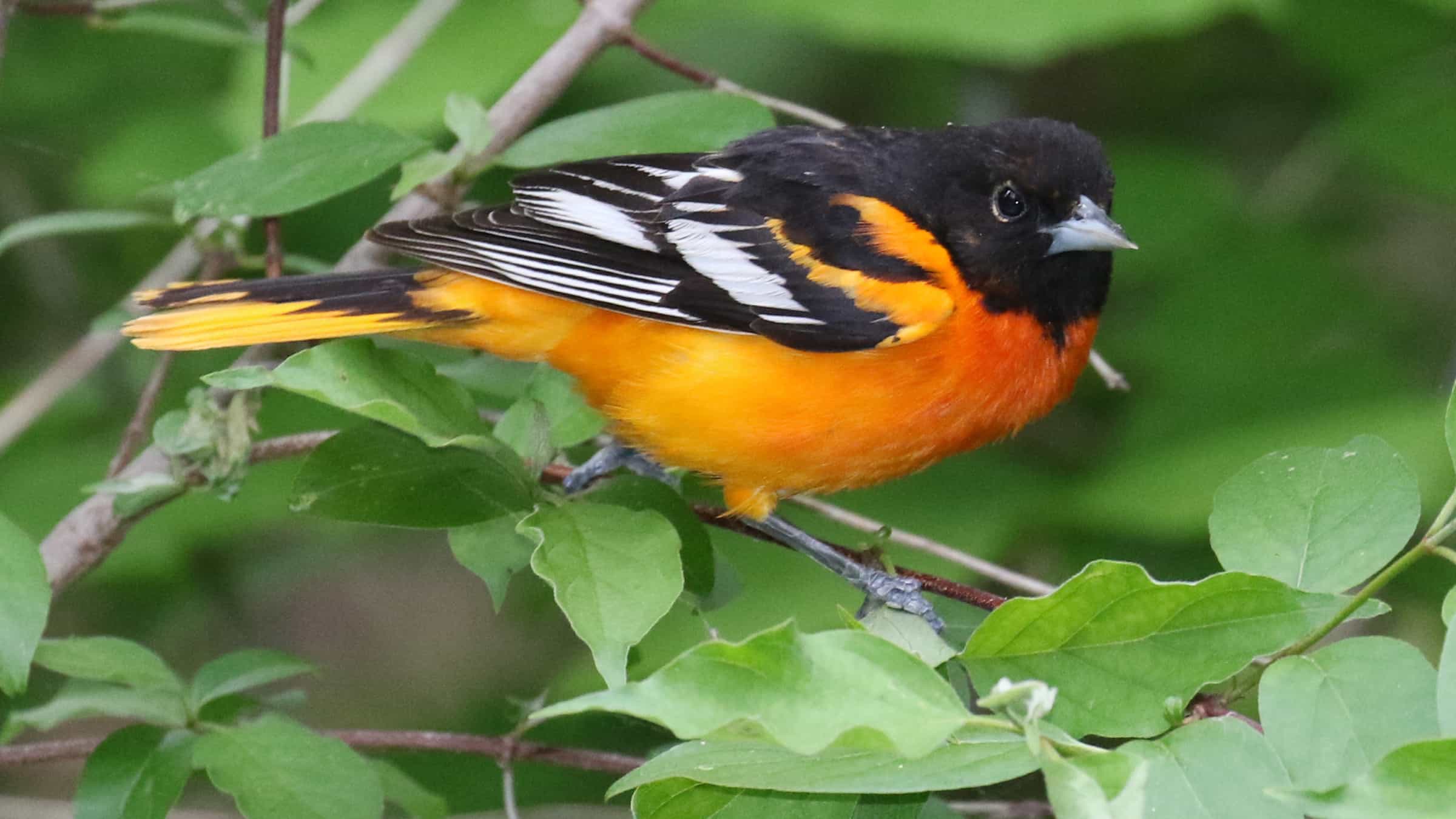
In conclusion, Baltimore Orioles are more than a beautiful songbird; they represent the connection between humans and nature, symbolize regional pride, and encapsulate cultural significance. As one of North America’s most beloved birds, understanding their behaviors, habitats, and roles within ecosystems invites admiration for the complex dynamics of the natural world. Collaborative conservation efforts will be essential to ensure that future generations continue to marvel at these spectacular avian jewels.
By nurturing both individual appreciation and collective action, we can deepen our commitment to safeguarding the Baltimore Oriole for decades to come.
